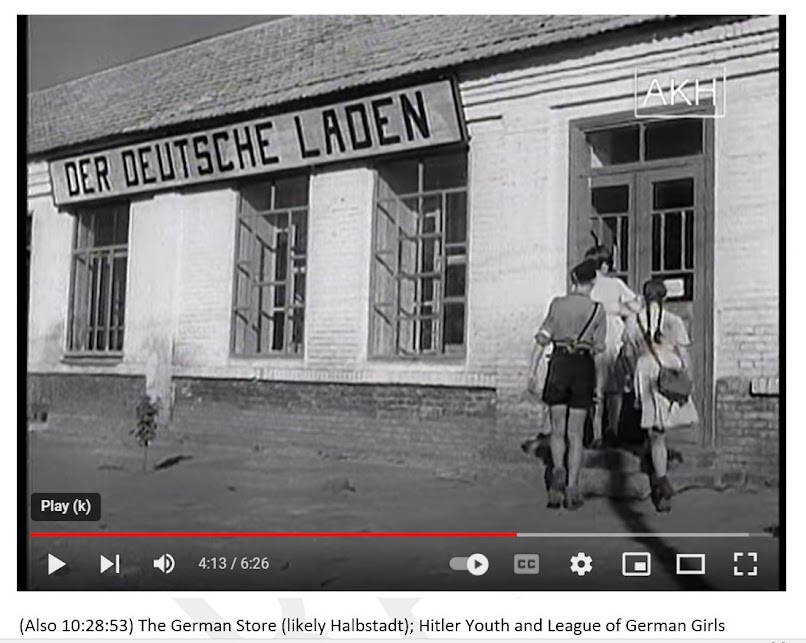These photos are from German propaganda material filmed in
Molotschna (called "Halbstadt") in 1943—just a few months before the
evacuation from Ukraine and trek to German-annexed Poland (Warthegau).
The edited shorter version is of higher quality and designed as propaganda to be consumed by Germans in the Reich and to secure their approval. The scenes are marked by cleanliness,
orderliness and discipline. There is economic activity, a model Kindergarten,
and always happy ethnic German people in the newly occupied territories.
Anything that may have been good here for Mennonites meant
enslavement, hunger and death for untold numbers of others.
Two versions of the film are available:
Shorter (edited for length; higher quality with
background music): https://www.youtube.com/watch?v=_VzkxGBCrdk.
Longer: "Material Nr. 1574," https://archiv-akh.de/filme?utf-8=%E2%9C%93&q=halbstadt#1.
"In the summer of 1943, film footage was shot in and around Halbstadt [central village and new name for Molotschna as a whole] to document the state of development and the deployment of the 'First Ethnic German Cavalry Regiment' [three 'Mennonite' squadrons of ca. 750, plus one 'Lutheran/Catholic German' squadron]. After a long search, we were able to find the complete film reels (total running time over two hours) intact in a Ukrainian collection and acquire them for our archive.
According to the Nazis, the fertile area around Halbstadt was to be developed into a model settlement under German leadership, the goal of which was to secure the food supply for the Reich German population.
Shortly after the recordings were made, the inhabitants of
Halbstadt were evacuated to the so-called Warthegau [German-annexed Poland].
Here they [two-thirds; 23,000] were overrun by the Red Army at the end of the war
and deported back to Siberia and Kazakhstan.
With 57 villages, the Halbstadt Colony [=Molotschna] was the
largest settlement founded by Mennonite settlers from West Prussia on the
territory of present-day Ukraine ...
After the occupation of Halbstadt by the Wehrmacht [German
Army; Oct. 1941] the so-called "Ethnic German Cavalry Regiment" was
organized [March 1942] with volunteers [often with significant pressure]. The
regiment was subordinate to the SS [part of Waffen-SS on Oct. 31, 1942]. One of
[the squadrons] was based in Halbstadt [others in Prischib, Waldheim and
Gnadenfeld; by this point combined at Tokmak]. The regiment had about ...
[800-plus] cavalry, and was housed in an [munitions ?] factory in Tokmak. The
men were assigned to harvesting operations [Fall 1941], partisan operations,
and local security operations. In October 1943 [actually Spring 1944, after the
Trek], the regiment was transferred en masse to [other divisions in Poland] ..."
[My notes in square brackets—ANF]
For more on the "First Ethnic German Waffen-SS Cavalry
Regiment," see my post (forthcoming).
--Arnold Neufeldt-Fast












Comments
Post a Comment